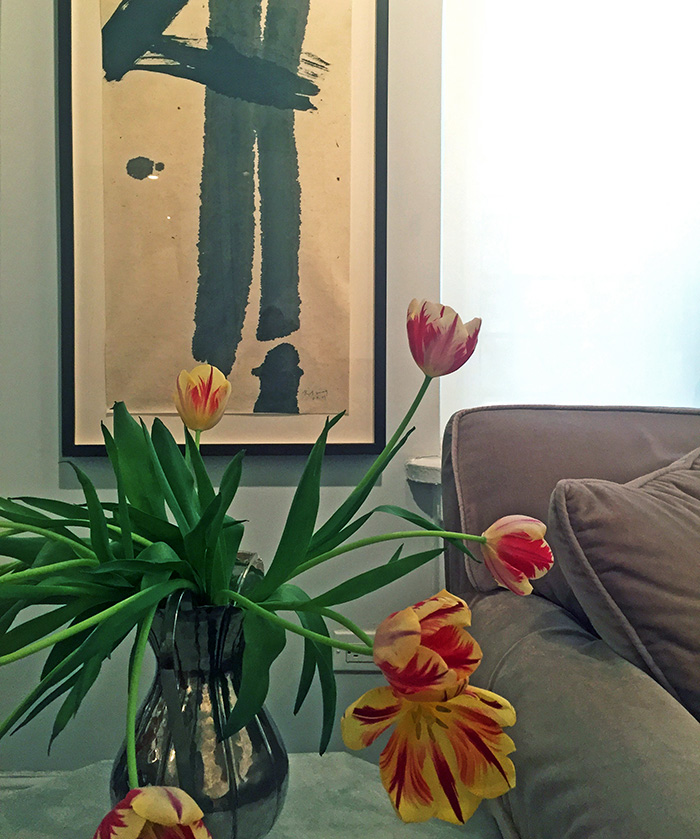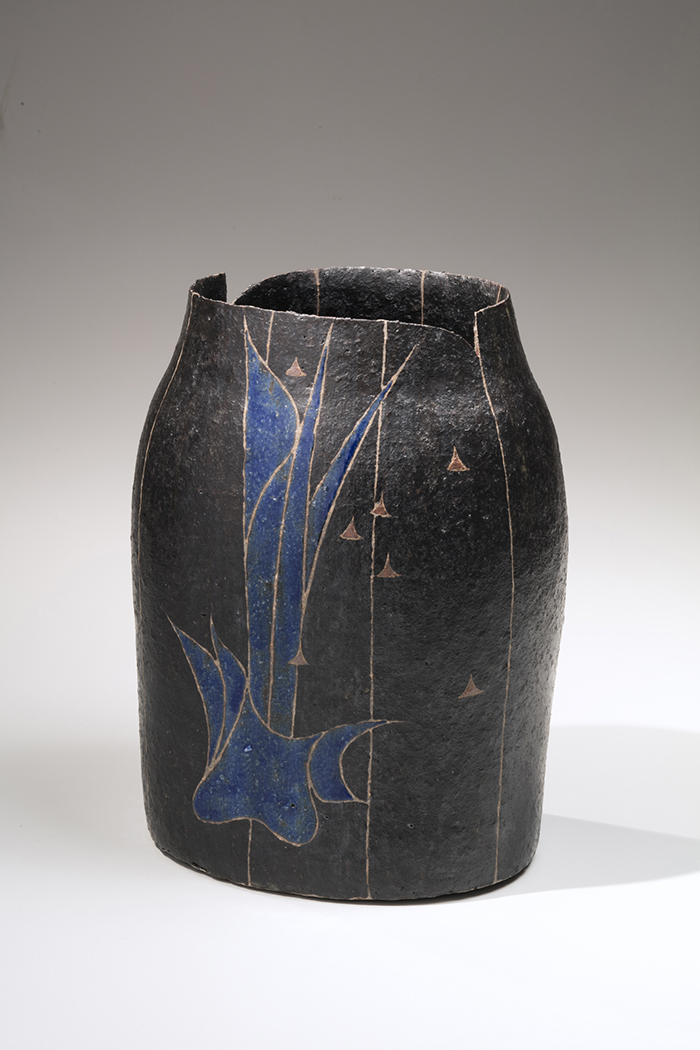
As we look towards Asia Week New York's tenth anniversary in March 2019, we're also taking a look back at the event's most memorable works of art. This is part 2 of a multi-part series in which we will be showcasing the most important objects sold by our participants over the last decade. Check back here often or subscribe to our newsletter to stay updated. Below, the stories of four incredible objects:
GIUSEPPE PIVA'S RARE SAMURAI ARMOR

An exceptional samurai armor from the Inaba clan
Mid Edo period (1615 – 1867), 18th century
Helmet signed: “Masuda Myochin Minbu Ki no Munesada Saku” and dated: “A lucky day in February in the 7th year of Horyaku” (1757)
Provenance: Iyo no kami Inaba clan
The helmet is made in the style of a Kamakura period kabuto, with an 18 plates rounded bowl showing large protruding rivets. The exquisite parcel giltwood front decoration is shaped as a shachihoko, a mythical creature often represented as protection against fire. The neck guard is covered with a rare horsehair red and white decoration. The cuirass is richly decorated in maki-e lacquer over a black ground, with a red figure of Raijin—the god of Thunder—creating a storm beating his drums among clouds. The same black lacquer is used to cover all the other armor’s parts, except for the helmet’s bowl.
The Inaba family originated in 16th century Mino Province; during the Edo period, as hereditary vassals of the Tokugawa, the clan was classified fudai and its members were appointed daimyō of large and strategic provinces; they also covered various important administrative, political and military roles. Myochin Munesada, who signed and dated the kabuto, is reported to be son of the famous Muneakira; his works are very rare.
The armor was sold by dealer Giuseppe Piva during Asia Week New York 2016 to a private European collector.
A SONG WITHOUT A SOUND AT M. SUTHERLAND FINE ARTS

Jia Youfu
A Song Without a Sound
2007
Ink on Xuan paper
33.5 x 63 inches
Dealer Martha Sutherland shares some vivid memories below:
I first saw this piece in Jia You Fu’s studio outside of Beijing one hot, sultry summer day. It was one of only several “da hua” that Jia painted over the previous winter. He usually kept one or two very large scale paintings and then did several more slightly smaller versions on a similar theme.
“Song without a Sound” stopped me in my tracks when I entered the studio. Painted only in ink and ink wash with no colored mineral pigments, the composition is like a vortex, spinning within the rocky precipices of a Northwestern Chinese mountainscape, as if you were hypnotized and lured into the scene. The more one studies the brushwork, the more one is amazed at the artist’s control of the layers of ink washes and brushwork.
A new client walked into my gallery during Asia Week New York. Having done his homework, he requested a private appointment for a more relaxed and intimate look at other Jia Youfu pieces in the inventory several weeks hence. When he saw “Song Without a Sound” for the first time, he reacted much like I did in Beijing. I knew then that he would buy it.
M. Sutherland Fine Arts is lucky to still have a handful of pieces by Jia in our inventory. Each year, Asia Week New York turns out more new serious collectors who come to New York from throughout the States, Europe and Asia.
THREE GIANTS AT JOAN B. MIRVISS LTD

Kamoda Shōji (1933-1983)
Slightly flattened ovoid vessel with blue enamel decoration and striped matte black ground
1977
Glazed stoneware
12 1/4 x 9 1/2 x 7 in.
31.3 x 24.5 x 18.3 cm.
Photo by Richard Goodbody
Trevor H. Menders, during an internship at Joan B. Mirviss Ltd, reflected on the gallery's seminal Asia Week New York 2018 exhibition:
Asia Week New York 2018 witnessed contemporary Japanese clay assuming its rightful place as fine art in the American public eye. The transformative 20th-century Japanese ceramists Kamoda Shōji, Matsui Kōsei, and Wada Morihiro featured in our exhibition Three Giants of the North each appeared by both name and image in numerous publications. While these appearances were significant, the biggest victory for the entire field of modern Japanese ceramics comprised two New York Times articles: “Asia Week’s Rare and Unusual Objects for Art Lovers and Collectors” and “21 Art Exhibitions to view in NYC This Weekend.”
In the first, only three works were illustrated: the National Treasure 17th-century screens of Pines by Hasegawa Tōhaku [Japan Society], the second an ancient Tibetan mandala [Asia Society], but the third prominently featured a stoneware vessel by Kamoda Shōji from Three Giants. Modern ceramics were clearly equated with benchmark master paintings from the bygone eras. For us, this was a transformative moment for both East and West.
The second NYT article stated: “the work ranges from religious statuary to textiles, prints and paintings. The collection of ceramics by the excellent 20th-century potter Kamoda Shōji at Joan B. Mirviss is a notable highlight.” Giants appeared as the second exhibition listed, directly following a discussion of a show on modern Brazilian art at MoMA. The same stoneware vessel by Kamoda appeared at the top of the page.
The appearance of works by 20th century Japanese clay artists next to the likes of Momoyama period folding screens or Latin American modernist pioneers has always been an aspiration for us, but never an expectation. Introducing Japanese ceramics to the West has been a process spanning four decades. Having a luminary of modern ceramics appear on the same page as a major MoMA exhibition in the New York Times marks a coming to fruition of this challenge, and a triumphant start to the gallery’s fifth decade.
A VESSEL-SHAPED TABLE AT NICHOLAS GRINDLEY

A jichimu table in the form of an archaic fang ding
China, probably Daoguang (1821-1850)
Jichimu wood
33 3/4 x 63 5/8 x 19 1/2 in
(85.7 x 161.6 x 49.5 cm)
Rebecca Gardner, manager at Nicholas Grindley Works of Art, writes:
The most unusual item we have shown during the 10 years we've participated in Asia Week New York was the archaic-form table we exhibited in March 2017. This attracted attention from both furniture enthusiasts and archaic bronze collectors alike.
The table, made from jichimu, was in the form of an archaic fang ding, a bronze ceremonial vessel, but was constructed during the Qing dynasty—probably Daoguang 1821-1850. Before we acquired this table, only two other examples of tables of this archaic fang ding form were published, and these might well have been the same table, although the dimensions vary in the two publications. The first was in the catalogue of the Guanfu Museum, Beijing, page 75. The Guanfu Museum is a non-profit museum in the PRC with its main location in Beijing; Ma Wei-Du is the founder and director of the museum. The second was published in Tian Jiaqing’s ‘Classic Chinese Furniture of the Qing Dynasty’ no. 90, page 200, where it is attributed to “Antique Shop, Beijing.”
We sold our table to a prominent private collector, who in turn lent it to the Art Institute of Chicago for their exhibition early in 2018, Mirroring China’s Past: Emperors and Their Bronzes.
